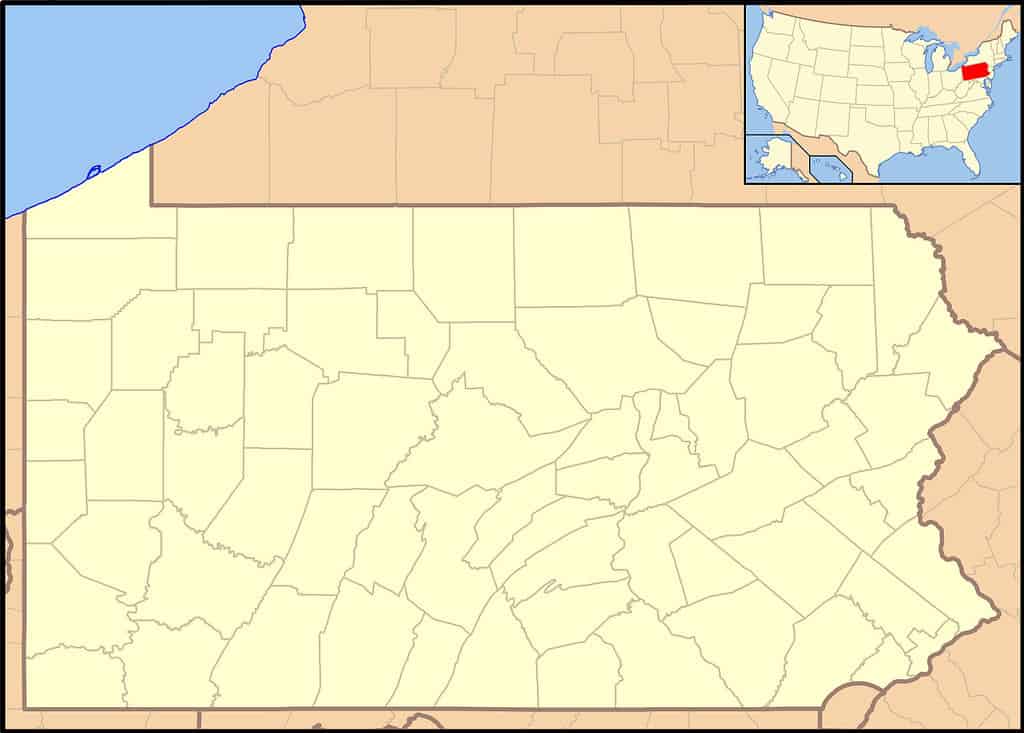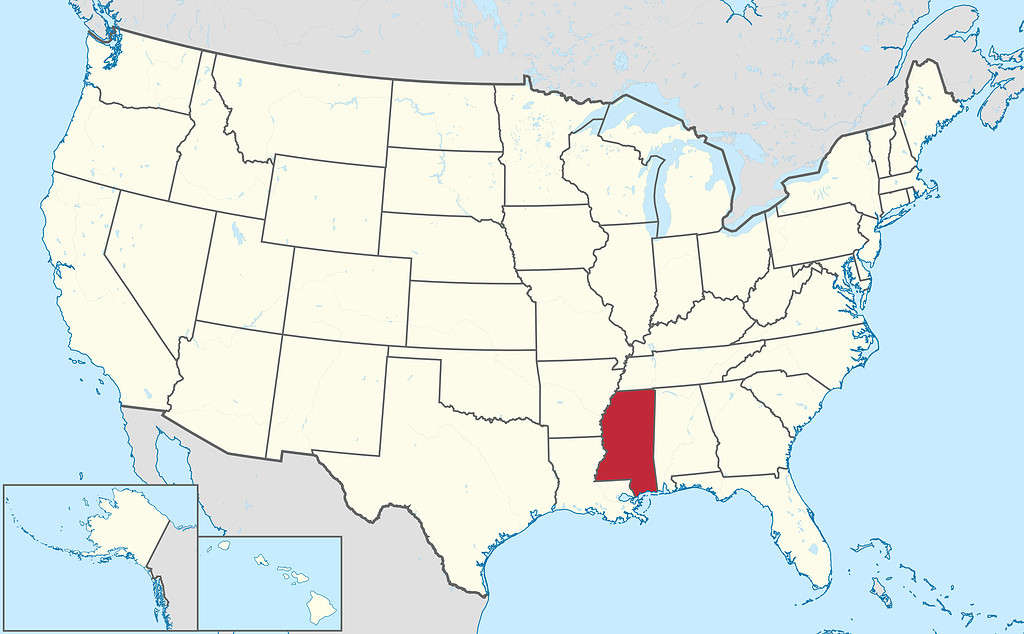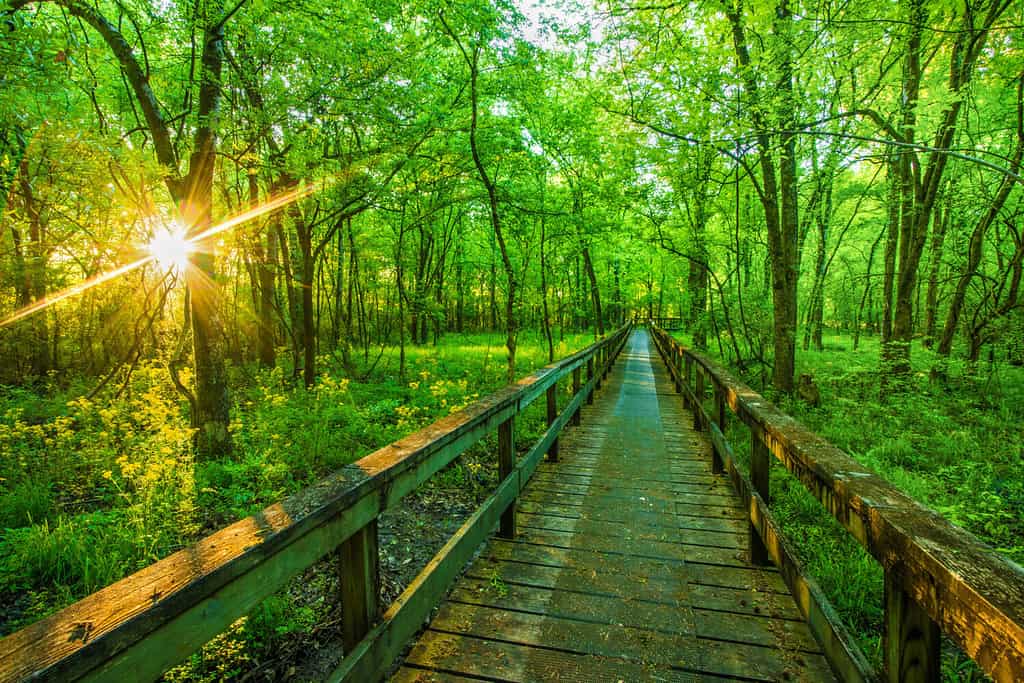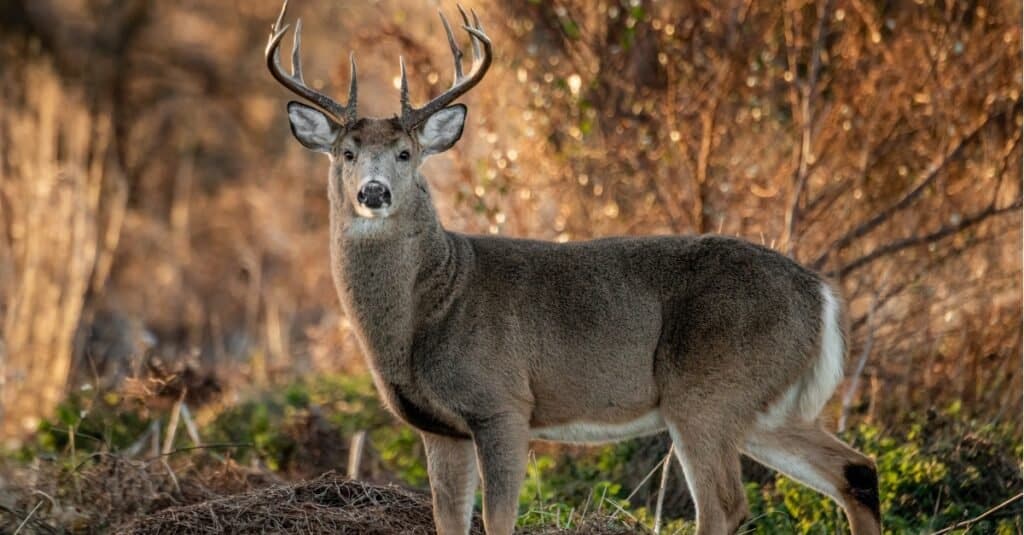Mississippi is located in the Deep South of the United States. The Magnolia State ranks among the lower half of the fifty U.S. states in terms of total area. Here is an in-depth look at the size of Mississippi, how its area compares with other states, and much more.
Square Miles and Kilometers
Mississippi’s total area spans 48,430 square miles or 125,443 square kilometers. Around three percent of the state’s area is water, giving Mississippi a total land area of 46,952 square miles or 121,607 square kilometers.
Acres
A football field (without the end zones) is just over one acre in size. One square mile is equivalent to 640 acres. Mississippi’s total area covers 30,995,200 acres.
Length and Width of Mississippi
At its longest point, Mississippi measures 340 miles (547 kilometers) from north to south. Neighboring Alabama has a very similar north-to-south span.
Mississippi spans roughly 170 miles from east to west at its widest point. Again, Alabama has a similar width. It is only about 20 miles wider than Mississippi.
The Mississippi Gulf Coast region in the south is significantly narrower than the rest of the state. The distance from the Mississippi-Louisiana border to the Mississippi-Alabama line just east of Petit Bois Island is only about 70 miles, a full 100 miles shorter than most of the state.

Mississippi’s measurement from north to south is twice its east-to-west distance.
©Ali Zifan; colored by Supernino / CC0 – License
Other States
As noted at the beginning, Mississippi is the 32nd largest state in the nation. Pennsylvania is the closest state to Mississippi in terms of total size. The Keystone State is 2,375 square miles smaller than Mississippi.

Pennsylvania is the closest state to Mississippi in terms of total area.
©National Atlas of the United States, Niagara / Public domain – License
Alaska is the largest state in the United States by an incredible margin. At 665,384 square miles (1,723,337 square kilometers), Alaska is well over 13.5 times larger than Mississippi.
Texas is the largest state in the conterminous United States. It is more than five and a half times the size of Mississippi. California is more than three times larger than Mississippi.
Looking to the other extreme, Rhode Island is the smallest state in the nation. Nearly 40 Rhode Islands would fit inside Mississippi’s borders!
The seven smallest U.S. states combined would all fit inside Mississippi. Those states are Massachusetts, Vermont, New Hampshire, New Jersey, Connecticut, Delaware, and Rhode Island.
Mississippi accounts for 1.28% of the United States’ total area. For perspective, Texas accounts for just over seven percent of U.S. land, while a tiny 0.04% of the United States lies in Rhode Island. Alaska holds a jaw-dropping 17.48% of the total area of the United States.
State Borders
Mississippi shares borders with four states. It is bordered by Tennessee to the north, Alabama to the east, Louisiana to the southwest, and Arkansas to the northwest. The state’s western border is largely defined by the Mississippi River. Its southern border lies on the Gulf of Mexico.

Mississippi borders four states and the Gulf of Mexico.
©TUBS / CC BY-SA 3.0 – License
Population
Mississippi ranks 34th among U.S. states in terms of population. The state is home to 2,940,057 residents (U.S. Census Bureau 2022 estimate).
Kansas’ population is almost a mirror image of Mississippi’s. The Sunflower State has 2,937,150 residents (2022 estimate), only about 2,900 fewer than Mississippi.
Neighboring Arkansas also has a similar population. The Natural State has 105,580 more residents than Mississippi.
Puerto Rico is the only U.S. territory more heavily populated than Mississippi. The small Caribbean island has over 280,000 more residents than the Magnolia State.
Wyoming is the least populous state in the nation, with just 581,381 residents (2022 estimate). It is one of five U.S. states with populations under one million, the others being Vermont, Alaska, North Dakota, and South Dakota. Mississippi’s population is more than five times that of Wyoming. And even though Alaska is 13.5 times larger than Mississippi in territory, Mississippi has more than four times as many residents.
California is the most populated state in the U.S. The Golden State’s population is more than thirteen times the size of Mississippi’s.
Population Density
Mississippi is the 32nd most densely populated state in the U.S. Population density is the calculation of the number of people per square mile of land area. The state has a population density of 63.1 people per square mile. Arizona has a nearly identical population density. The Grand Canyon State has a population density of 63 people per square mile.
Arkansas, Mississippi’s northwestern neighbor, has a smaller population density than Mississippi. The state has 57.9 residents per square mile.
Alabama and Louisiana have higher population densities of 99.2 and 108 people per square mile, respectively.
With its immense size and small population, Alaska is the least densely populated state in the U.S. by a wide margin. The state has a minuscule population density of 1.3 people per square mile.
At 1,273 people per square mile, New Jersey has the densest population of any state in the nation.
The densest population anywhere in the United States is in Washington, D.C. The city is crammed with 11,295 people per square mile.

Much of Mississippi is still wild and unpopulated, such as this forest near Tupelo.
©Jordan Hill Photography/Shutterstock.com
Largest Cities
Mississippi is home to one major city (population greater than 100,000). Jackson is Mississippi’s capital and its largest city, with 153,700 residents. The Jackson Metropolitan Area, which covers seven counties, has a population close to 595,000. Around twenty percent of Mississippi’s populace lives in the Jackson metro. However, the city itself shrank by more than eleven percent between the 2010 and 2020 censuses. Meanwhile, other Mississippi cities, while much smaller than Jackson, saw significant growth.
Gulfport reported 72,926 residents, up over 7.5%. Southaven’s 54,648 residents reflected a jump of 11.6%. Biloxi grew by an eye-popping 12.2% to 49,449 residents. Hattiesburg, Olive Branch, and Tupelo also reflected noteworthy growth in the ten-year span.

Jackson is the capital of Mississippi and its largest city.
©Sean Pavone/Shutterstock.com
Counties
There are 82 counties in Mississippi, higher than the average number of counties in a U.S. state (62).
Yazoo County in west-central Mississippi is the largest county in the state by area. The county spans 920 square miles (2,383 square kilometers).
The state’s smallest county by area is Alcorn County in the northeast. The county covers 400 square miles (1,036 square kilometers).
Hinds County is the most populous county in Mississippi, with 217,730 residents. Not surprisingly, the state capital of Jackson lies in Hinds County.
Mississippi’s least populated county is Adams County, in the far southwest corner of the state. The county is home to 28,408 residents. Though it is the least populous county in the state today, Adams County was the first county organized in the former Mississippi Territory.

Hinds County is the most populated county in the state.
©David Benbennick / Public domain – License
Federal Lands
While there are no national parks in the state, Mississippi is home to multiple federal lands. Those lands include:
- Brices Cross Road National Battlefield Site
- Emmett Till and Mamie Till-Mobley National Monument
- Gulf Islands National Seashore
- Medgar and Myrlie Evers Home National Monument
- Natchez National Historic Park
- Shiloh National Military Park
- Tupelo National Battlefield
- Vicksburg National Military Park

Mississippi is home to numerous federally managed lands, including the Tupelo National Battlefield, commemorating the Battle of Tupelo during the Civil War.
©Ken Lund from Las Vegas, Nevada, USA / CC BY-SA 2.0 – License
Rainfall
Mississippi is among the rainiest states in the nation. Only Hawaii and Louisiana receive more annual rainfall than Mississippi. The state averages 100 rainy days yearly and receives around 57 inches of annual rainfall. December is generally the wettest month of the year in the state.
State Animals
There are ten official state animals that represent Mississippi.
The white-tailed deer was named the official land mammal of the state in 1974. The state is home to nearly two million white-tailed deer. A second official land mammal was added in 1997: the red fox.
The state’s other animal representatives include the northern mockingbird (state bird), spicebush swallowtail (state butterfly), largemouth bass (state fish), western honey bee (state insect), bottlenose dolphin (state marine mammal), American alligator (state reptile), eastern oyster (state shell), and wood duck (state waterfowl).

The white-tailed deer is one of Mississippi’s state animals.
©iStock.com/Harry Collins
The photo featured at the top of this post is © DrRandomFactor / CC BY-SA 4.0 – License / Original
Thank you for reading! Have some feedback for us? Contact the AZ Animals editorial team.






